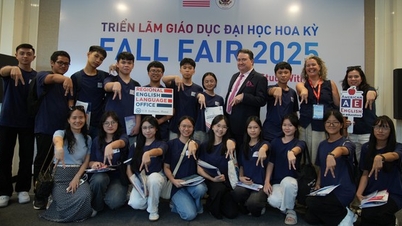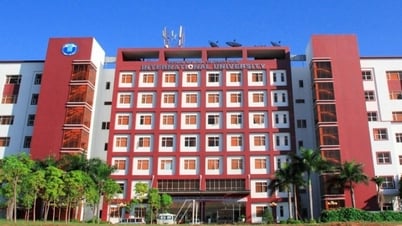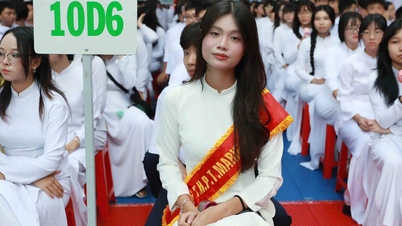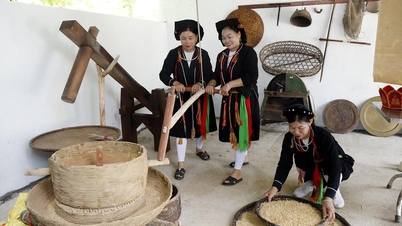For many American universities, granting scholarships is a "discount" policy and looking at the big picture, the amount of one billion VND is only a part of the long journey of studying abroad.
Bui Minh Duc, 30 years old, is a student majoring in Communications at Clark University, Massachusetts, USA, under the Fulbright scholarship program sponsored by the US Government . During the process of applying for scholarships and studying in the US, Minh Duc believes that we need to be more realistic about the value of billions of dong of scholarships.
Compared to about 10 years ago, I see that the understanding of studying abroad of Vietnamese parents and students has become much more realistic. Studying abroad is not a red carpet, rolled out before students and guaranteed a good job after returning home, and multi-billion scholarships are not all rosy.
Of course, any amount of scholarship money is valuable, especially for schools with fierce competition. But it must be noted that education in the US is a huge business and awarding scholarships is also a strategy of universities. They have calculated carefully enough to know whether the profits earned by giving away one or more billions of dollars in scholarships are commensurate or not.
First , if you put a billion dollars (as an illustration) into the big picture of tuition at an American university, you will see a big difference.
According to US News , the average amount a student pays for tuition in 2020-2021 at private universities is about $35,087 (more than 820 million VND), public universities $21,184. Prestigious, highly ranked schools will have tuition 2-3 times this amount. At Clark University, where I am studying for my master's degree, undergraduate tuition is about $50,000 a year.
Universities often award scholarships in percentages, for example 25-50% for four years, or 100% for the first year and then the student has to pay tuition. The generosity of the scholarships also depends on the reputation of the school. I have found that scholarships at smaller, less prestigious schools are generally higher than those at larger schools.
In general, with a one billion dong scholarship, not counting the case that tuition fees will increase each year, the family still has to pay at least another three billion for four years of tuition.
It should be added that there are cases of students receiving full tuition scholarships from American universities. However, the competition for these scholarships is fierce. Government scholarships, which often cover 100% of tuition, are mainly at the master's level.

Minh Duc at Clark University campus, USA, May 2023. Photo: Character provided
Second, tuition fees usually only account for 40-60% of the total cost of studying abroad, so even with scholarships, the actual amount that families have to pay is still very large.
In addition to tuition fees, students will have to pay visa fees, airfare, accommodation, study materials, insurance, travel expenses..., depending on the area they choose.
For example, I live in Worcester, Massachusetts. Worcester is not as big as Boston, but Massachusetts is expensive in general. It is considered a college town, so many expenses are higher. If you do not live in the dormitory, students spend about $600-$900 on rent outside, $300-$400 on food every month, not including other living expenses. About $1,500 is considered the basic cost of living for students in the city where I am studying.
Full scholarships for university tuition are difficult, full scholarships that cover living expenses are even rarer. Therefore, when adding up the above numbers, many parents will have a more realistic view of the cost of studying abroad and realize that a billion in scholarships is only a part of the long journey of studying abroad.
For many universities, the reality is that granting scholarships is just a policy of "discounting" products to stimulate consumer demand - in this case, parents and students. It is like a sales negotiation: The two sides will bargain back and forth until they find a common number. On official documents, that negotiation is called "scholarship".
Bui Minh Duc
Source link


![[Photo] Solemn opening of the 12th Military Party Congress for the 2025-2030 term](https://vphoto.vietnam.vn/thumb/1200x675/vietnam/resource/IMAGE/2025/9/30/2cd383b3130d41a1a4b5ace0d5eb989d)
![[Photo] President Luong Cuong receives President of the Cuban National Assembly Esteban Lazo Hernandez](https://vphoto.vietnam.vn/thumb/1200x675/vietnam/resource/IMAGE/2025/9/30/4d38932911c24f6ea1936252bd5427fa)


![[Photo] The 1st Congress of Phu Tho Provincial Party Committee, term 2025-2030](https://vphoto.vietnam.vn/thumb/1200x675/vietnam/resource/IMAGE/2025/9/30/1507da06216649bba8a1ce6251816820)
![[Photo] Panorama of the cable-stayed bridge, the final bottleneck of the Ben Luc-Long Thanh expressway](https://vphoto.vietnam.vn/thumb/1200x675/vietnam/resource/IMAGE/2025/9/30/391fdf21025541d6b2f092e49a17243f)
































































































Comment (0)